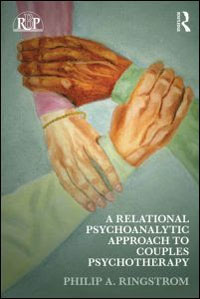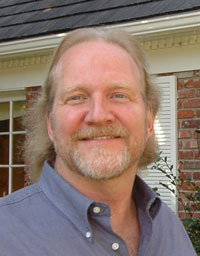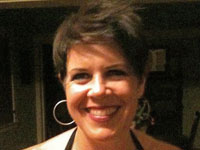Interview by Christina Emanuel
Christina Emanuel: Thank you, Phil, for participating in this interview for the IARPP Bookshelf. And congratulations on the publication of your new book!
Phil Ringstrom: Thank you and everyone at the IARPP Bookshelf for giving me this opportunity.
Could you share a bit about how you became interested in writing about psychoanalysis and couples therapy?
In the mid 1970s I was completing my MSW at the University of Kansas, including my intern training at the Menninger Foundation. The psychoanalysis of that period as practiced at Menninger left me cold. What warmed me up was immersing myself in all the ways systems theory, particularly family and couples systems theories, was pointing out the inextricable relationality of human nature in both the intrapsychic and the interpersonal domains. That interest followed me in the ensuing decades when I discovered intersubjective systems theory and relational psychoanalysis. So it became kind of a life’s work to write this book and to tie together four decades of thinking, teaching, writing, and practice.
Your book is 290 pages long, densely packed with theory and lively clinical examples. What do you hope the reader will take away as the most important message of this book?
You know I never really thought about that until after I had finished writing the book. However, since completing it I realize that for psychoanalytic practitioners I think the kind of couples psychotherapy I am advocating may very well be the best modality for introducing new patients to psychodynamic psychotherapy. In many cases it may be far better than individual psychotherapy, at least initially, for patients who have little or no familiarity with psychoanalysis. This is because it can be very trying to help non-psychoanalytically aware patients develop a sense of transference and curiosity about the things that psychoanalysis can foment in their lives.
Here’s an example of what I mean. Say I am five minutes late to a session. I bring my patient into my consulting room and I may, in a very psychoanalytically curious manner, say something like, “I am aware that I was five minutes late today. I am wondering if you might have some thoughts or feelings or even fantasies about that?” In my forty years of experience I found that the non-analytically oriented patient will usually look at me like I am crazy. He might say something like, “Geez, Doc, what’s the big deal?!? Anybody can be five minutes late! You guys will try to make something out of anything!” The idea that there is anything to be made about my being five minutes late is ludicrous to him. If, on the other hand, that same patient’s wife is five minutes late to their couples appointment, all hell can break loose. Not only might he fly off the handle at her, but also he will be able to give her an exact by the minute accounting of the money she has now wasted.
As an analyst practicing couples therapy, however, I have an instant opening to explore what his upset is about. We can explore what her lateness means to him and what it might be triggering from his past. We are right into the transference he is having toward her and which we can then begin to illuminate in everyday language.
What do you think are the most important ways in which your theory integrates and then evolves from traditional approaches to couples therapy?
My book covers quite a few psychoanalytic theories and others as well. I think one of the biggest contributions from the psychoanalytic canon is that treatment needs to begin symmetrically but eventually end asymmetrically. What I mean is that initially patients need to experience our deep empathic understanding of their conscious complaints. This is Step One of my model, and it rests heavily upon themes from self psychology and intersubjective systems theory. The beauty of this is that when couples present with an adversarial tone each partner not only experiences the analyst as grasping his or her experience, but also sees that the analyst can understand something of the other, something that previously hadn’t been understood. This creates hope. But for the work to be thorough it must also eventually take up the asymmetry in human relations, i.e. the importance of each partner being different, from the analyst and from one another. This is what I refer to as the “relational turn” of the model starting at Step Four and following through to Step Six.
Getting to this often means taking up what is less accessible to the empathic introspective approach and arises instead through enactments, i.e., what gets enacted in the treatment with all three parties, taking up the unconscious material that is on the editing room floor of their narratives. Step Four is about “awakening the slumbering giants” of their unconscious minds and further illuminates what is deeply at stake in the kinds of “doer/done-to” binaries that keep them perpetually at odds with one another. In Steps Five and Six these become vastly clearer. This is critically important because you cannot authentically negotiate intersubjectively (the outcome of Step Six) that which has not been negotiated intrapsychically (the work of Step Five).
Step four of your six step method particularly got my attention, the step in which the dread to repeat negative repetitive transference patterns shifts into the dread not to. I’m wondering how you think that works. How do you see couples making this very difficult yet critically important shift in their relationship?
As an example, let’s say that the initial complaint of one of the partners is that there isn’t enough intimacy in the relationship, sexually or otherwise. Then let’s say that the work of Step One ferrets out some of the more conscious reasons why this hasn’t been happening. Greater mutual recognition occurs, followed by more openness to being intimate. As the wished-for intimacy occurs, however, the partner with the initial complaint begins to become uncomfortable with it. In Step Four I invoke a lyric from Irving Berlin which is: “When you get what you want, you don’t want what you get!” What the initially complaining partner starts to discover is her somewhat schizoid side. That is, the absence of intimacy she consciously protested is now something that she fears when she really begins to get it.
Making this shift means helping each partner get much more curious about their psychodynamic process. That is, there is more going on unconsciously than they are aware of, and discovering this can be very exciting both personally as well as for their relationship. This is where we see what Philip Bromberg described as patients “wishing to remain the same while changing.”
I find it useful in Steps Four, Five, and Six to help the patients see their multiple self-states that many relationalists talk about. I talk about our having more or less a kind of “committee of the mind” and that all its members are not always in agreement. In fact, some are not even being recognized in the “conference room of the mind,” so to speak. Again invoking Philip Bromberg, our human problem is “to feel like one, while being many.”
I’m wondering what types of couples you think are the most challenging for clinicians to work with. Could you give a brief example?
In the book I talk about how our work as couples therapists is often akin to the work of oncologists. That is, that when a couple walks through our door, we soon begin to see what stage of cancer their relationship is in. It may not be salvageable. The statistic is that 80% of those entering couples treatment end up in divorce. (However, 80% of the couples I see remain together). The oncology metaphor enables me to throw everything I have at them to see what can become possible. Death—aka divorce—always remains a possibility and I frequently will say that. That said, I also tell couples that motivation is the key to all psychotherapy and if they are committed to working as hard as I am, I promise them either a better marriage or a better divorce. Bear in mind that divorce rarely means that partners will never have to deal with one another again, especially when there are children, friends, and families in common.
This is a round about way at getting to your question about what can be most challenging for the therapist. In Step Three I talk quite a bit about mentalization, the capacity to recognize oneself and one’s partner as having a subjective sense of reality and initiative. Perhaps one of the hardest partners to deal with is one whose mentalization is dominated by “psychic equivalence,” in which a person believes that what he or she experiences IS objective reality, and that whoever disagrees is crazy because it does not accord with this “god’s-eye-view” of reality. That patient can have a hard time embracing that his or her reality and his partner’s are unique subjective views borne out of their unique ways of discovering, organizing, and creating their perspectives on the world. This kind of patient is deeply threatened by difference, the partner’s difference as well as the therapist’s. It takes quite a lot of finesse to get under this pervasive mentalizing style to get access to what it being defended against.
You illustrated the cover of this new book. It’s gorgeous! I’m wondering if you could discuss your painting and other artistic endeavors.
I took art classes in painting (mostly portraiture), drawing, and sculpting for about a decade starting in 1994. I love it. And I painted and drew regularly through 2008. Then my interests in writing began to be so time consuming that I had little time for art.
Regarding the cover painting, I wanted the cover to be a painting of mine. My wife Marcia came up with the idea of the three interlinking hands from a stock photo she found on the internet. Unfortunately, all three hands were male. I knew I needed a female hand, so the solution became to use Marcia’s hand as a model. Commenting on how much Marcia was helpful throughout writing my book, I often also joke that Marcia lent a hand to this book in more ways than one.
You’ve been involved in IARPP for many years. Could you describe how you became involved and how this organization has impacted your work?
I am one of the remaining founding Board Members of the IARPP. Although I wasn’t a part of the New York group that started it all, I was one of the “outliers” from outside NYC giving the center group advice from afar. Being a part of IARPP is probably the most important thing in my career as a psychoanalyst.
All of this good fortune came out of my long distance supervision with Steve Mitchell on my third control case during my analytic training at the Institute of Contemporary Psychoanalysis in Los Angeles. Steve and I met weekly on the phone from 1994 through 1996. We had a very good connection and that, along with a comparable connection with Lew Aron, resulted in my involvement years before IARPP actually was launched. This also included Steve asking me to chair the proposed 2004 second international IARPP conference in Los Angeles which I did with the close comfort and help of Spyros Orfanos and Jody Davies.
What other projects and professional activities are you working on these days?
The book’s publication has stirred up considerable interest around the world, leading to invitations to present all over. That’s been really fun. After I present in Australia in October this year I will have presented on every continent in the world except Africa.
I am still busy promoting the book as I can, but I am also slowly gathering ideas for my next book on the topic of improvisation in psychoanalysis. It’s an area of interest that has occupied me since my first publication in this area in 2001, my first of 12 articles and chapters on the subject.
Thank you, Phil, for taking the time to answer our questions.
Thank you, Christina, and everyone else at IARPP eNews for your interest! This has been fun!
Philip A. Ringstrom
5004 Haskell Avenue
Encino, CA 91436
email Phil Ringstrom
Interviewer contact information:
Christina Emanuel
16 S. Oakland Ave., Suite 201
Pasadena, CA 91101
email Christina Emanuel




